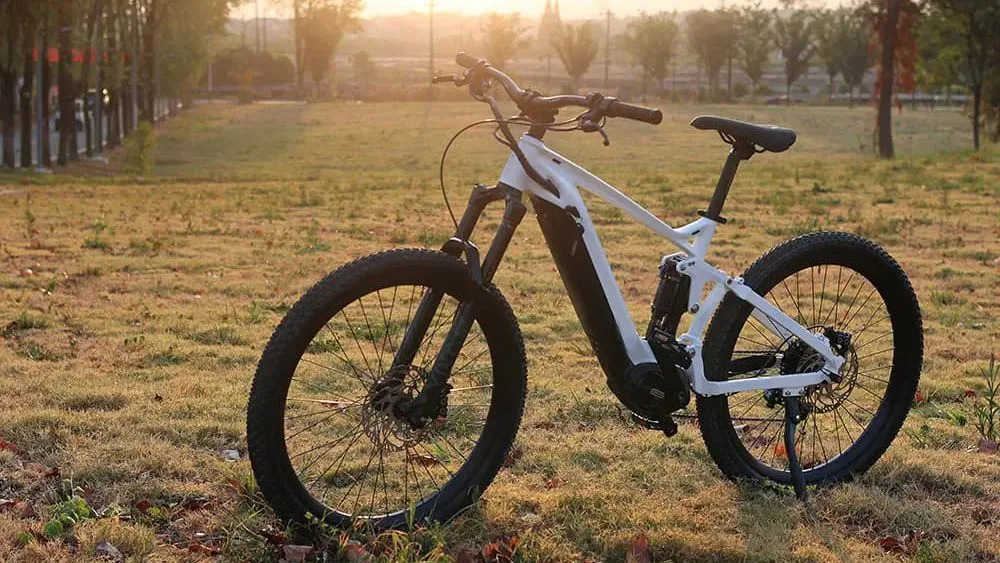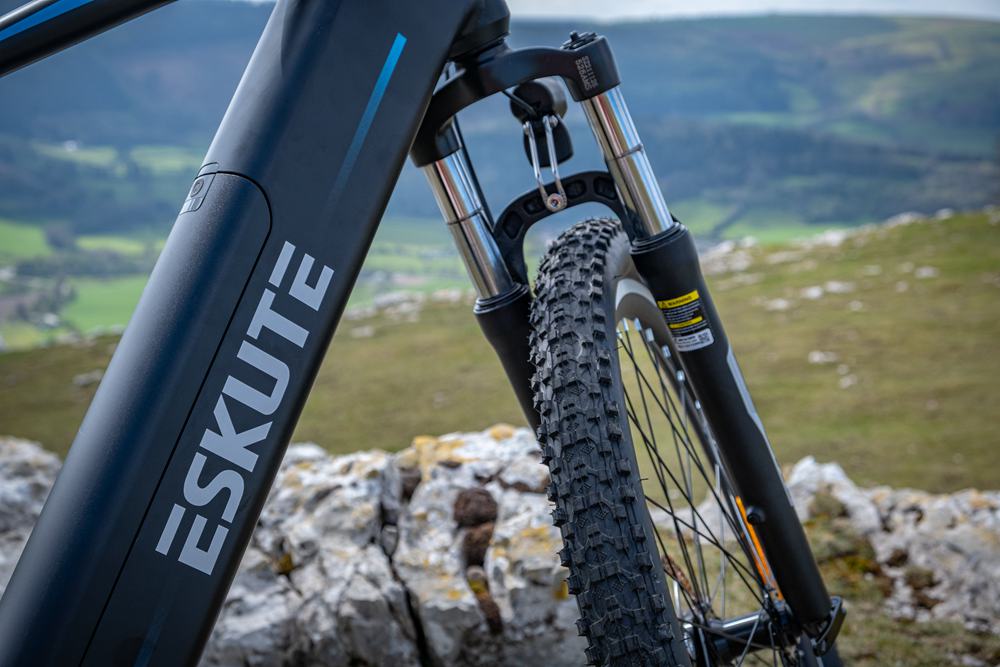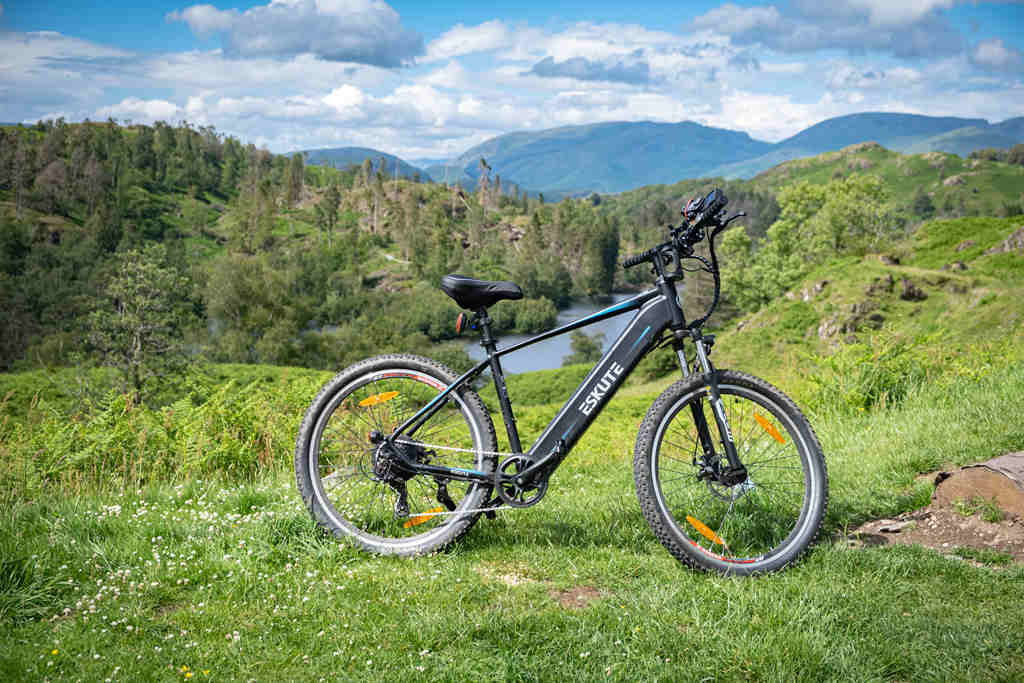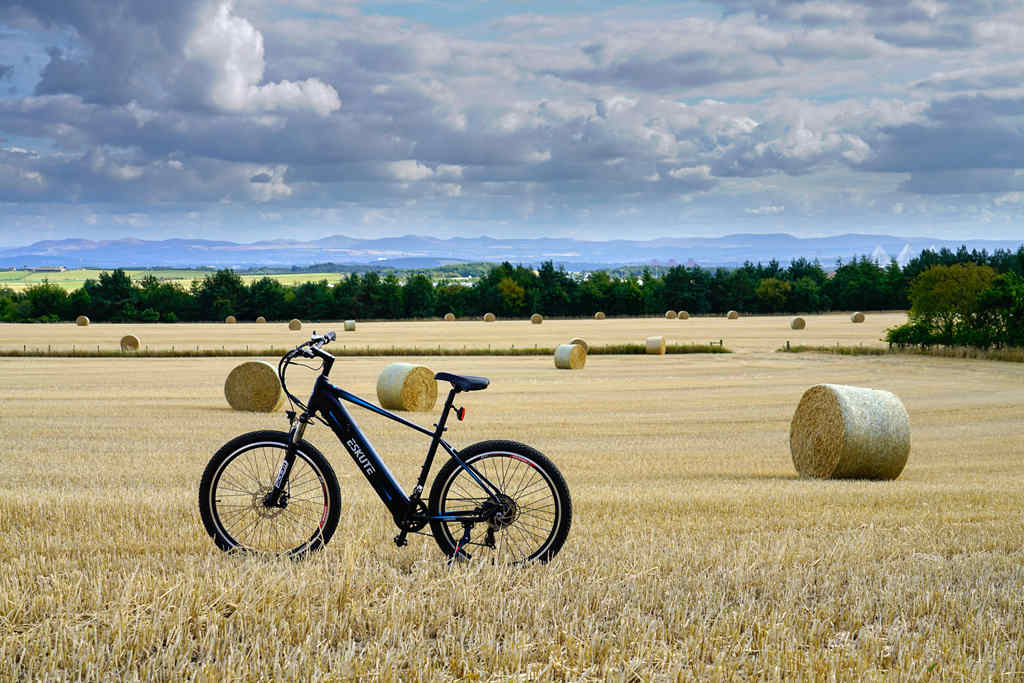Navigation
It's common for electric mountain bikes to feature a suspension system designed to help riders gain more control when riding rough terrain.
You can find hardtails and full-suspension electric mountain bikes among the most popular suspension types on the market. Hardtail bikes come with only a front suspension fork, while full-suspension mountain bikes have a suspension fork and a rear shock.
So, are you a new off-road rider or a seasoned expert that needs more clarification on both bike styles? In this comparison, we check out the differences, advantages, and disadvantages of each suspension type.
What are Hardtail eMTBs?
Hardtail mountain bikes feature a front suspension fork but no rear suspension, resulting in a rigid, unsuspended frame. Also referred to as front-suspension hardtail bikes, they are typically lightweight, making them easier to steer on rough terrain. The major advantage of this electric mountain bike is that it is more affordable than ebikes with complete suspension systems.
What is a Full suspension eMTB?
Full suspension mountain bikes, also known as dual suspension, feature front and rear suspension. The rear shock on dual suspension bikes enables them to become more efficient during rides and improves the traction on the bike. As a result, these bikes are an excellent choice for challenging terrain, and bikers can expect a comfortable ride on these mountain bikes.
What are the differences between Hardtail and Full-suspension eMTB?

Hardtail and full-suspension bikes share some similarities and differences. Using the table below, we'll outline six differences between hardtails and dual-suspension mountain bikes.
| Hardtail Electric Mountain Bikes | Full Suspension Electric Mountain Bikes | |
| 1 | Hardtail bikes feature a lightweight build. | Full-suspension electric mountain bikes are heavier due to the dual suspension systems installed. |
| 2 | These electric bikes are easy to repair and maintain. | Dual suspension bikes are more complex to repair and require more maintenance than hardtail bikes. |
| 3 | Hardtail bikes require less battery power while pedalling. | Full-suspension bikes consume more battery power during rides. |
| 4 | These bikes move slower on bumpy terrain and don't absorb shock, as well as dual suspension systems. | Riding a dual suspension bike on bumpy roads is faster and feels more stable when riding over them. |
| 5 | There are only a few adjustment options on hardtail / front suspension bikes. | There are more customization options available on full-suspension bikes than on hardtail bikes. |
| 6 | A hardtail bike provides a better learning experience than dual suspension bikes. | Dual suspension bikes tend to make riders complacent as the riding experience feels easier. As a result, riders may not gain useful tricks (such as how to use your legs to absorb bumps) from learning with full-sus bikes at first. |
Advantages and Disadvantages of Hardtails
Hardtail bikes have several advantages, including their affordable price point, lightweight build, etc. The following are the advantages and disadvantages of hardtail electric mountain bikes.
Advantages
- Hardtail bikes offer extra gearing options for riders. For instance, a hardtail frame can have a front derailleur and a 2x drivetrain which is ideal for bikers looking for more range options.
- Hardtail bikes are lighter than dual-suspension bikes, making them easy to carry. Also, the lighter weight makes manoeuvring through challenging trails on these bikes easier.
- Hardtail bikes are typically easier to repair and maintain than full-suspension bikes. Moreover, it's easier to find repairers for a hardtail bike than a full suspension bike.
- Hardtail mountain bikes are very durable. The sturdy frame of a hardtail mountain bike is more resistant to impact without causing severe damage. Bikers are assured that their hardtail bike's frame will withstand substantial hits thanks to its securely welded frame.
- In terms of versatility, hardtail bikes perform excellently. All types of mountain biking can be done on these bikes, including cross-country, downhill, and trail riding.
- Hardtail bikes are more budget-friendly than dual-suspension bikes. It is good news for new bikers on a tight budget.
Disadvantages
- Hardtail bikes offer fewer adjustment options than dual-suspension bikes. The rigid frame limits any adjustment possibility. As a result, you'll only be able to change the suspension forks.
- The absence of a rear suspension makes this bike feel less stable than dual suspension bikes on rough terrain.
- Hardtail mountain bikes typically offer fewer technological features than full-suspension mountain bikes.

Advantages and Disadvantages of Full Suspension
Full-suspension bikes are known for their comfort on bumpy terrain. Continue reading to learn more exciting advantages these bikes offer. We'll also highlight the disadvantages of this e-bike type.
Advantages
- Full-suspension bikes are known to feel more comfortable than hardtail bikes. The suspension frames cushion the bikes, making them more comfortable.
- Rear shocks are more adjustable, offering more flexibility when setting your bike for specific terrain.
- Bikers will find it easier to control dual-suspension bikes. You can corner harder on challenging or rougher trails with these mountain bikes.
- Full suspension bikes feature many customizable options that allow riders to tailor the bikes to their specifications.
- Full-suspension bikes feel more stable than hardtail bikes. The suspension keeps the bike from moving around as you ride through rugged terrain and down steep hills.
Disadvantages
- If the frame on your full-suspension frame cracks, you may be unable to fix it as quickly as a hardtail bike. We recommend contacting an expert repairer to resolve any issues with your rear suspension.
- Dual-suspension bikes are generally less durable due to the increased number of moving parts. Which means that more parts have a higher chance of failing.
- Full-suspension bikes cannot withstand as severe impacts as hardtails. These bikes weigh more than hardtail bikes. The rear shock absorber, bearings, and more complex frame design make this bike feel heavier than hardtail bikes. A heavier bike requires more effort to climb and accelerate. It's also a little more difficult to handle and turn.
- These mountain bikes require more maintenance because they require more components and regular service.
- Dual-suspension parts are much more expensive. Mid-range mountain bikes start around $2000 and can go up to about $2500. The presence of rear suspension adds $800 to $1500 to the cost of a mountain bike.
The average price of Hardtail and Full Suspension
A full-suspension electric mountain bike is more expensive than a hardtail bike due to the additional components and more complex frame. A hardtail mountain bike typically costs between 500-2000 pounds, whereas full-sus bikes retail between 1500-3000 pounds depending on specs.
Verdict
Ultimately, the best electric mountain bike choice depends on your value as a rider. You can't go wrong with any of these bikes. However, one bike may better suit your needs than the other. For instance, if you value extra comfort on bumpy terrain, speedier downhill rides, and more customizability, full-suspension bikes will serve you better. On the other hand, if you prefer more economical, lighter, and more efficient bikes, hardtail bikes are the way to go!
Fortunately, Eskute offers the best electric mountain bike options to make your rides on challenging trials more thrilling and memorable. Feel free to browse through our impressive electric mountain bike collection here!











Leave a comment
This site is protected by hCaptcha and the hCaptcha Privacy Policy and Terms of Service apply.